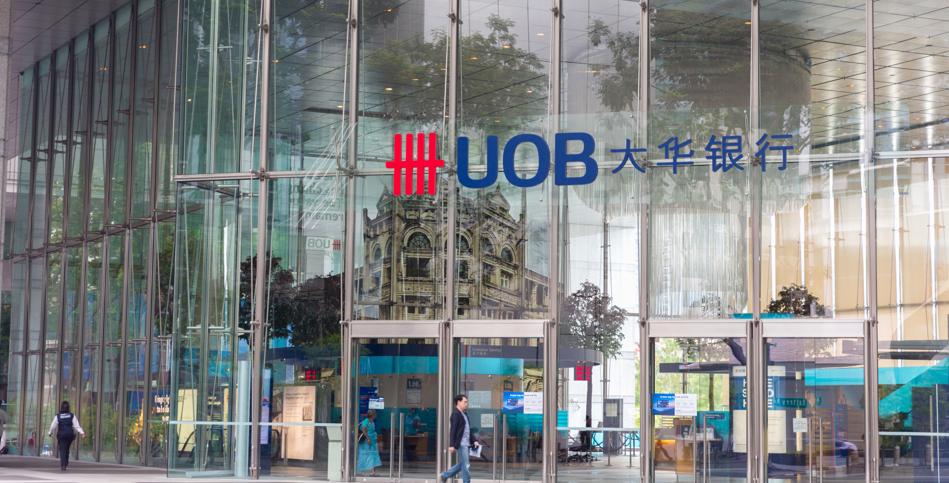A new report* from VRL KnowledgeBank examines the
provision of retail banking services through institutions owned by
members, communities or municipalities. The following brief extract
considers the areas in which these types of institutions have found
particular success.
The global mutual sector has been subject to considerable stress
in recent years. Many players have now accepted the need to
re-establish their value in the minds of their members – and there
is much evidence to show that this is paying off.
Since the 1980s many organisations have converted from mutual
status and the members have taken a short-term advantage from
realising the value embedded in the balance sheet. In recent years,
many mutuals have rearranged their constitution to ensure that
conversion will no longer release value to members. But even more
important, they have also successfully increased the knowledge and
commitment of members to the concept of mutuality.
Today, the enthusiasm for demutualisation seems to have subsided –
at least for the time being. Only consolidation is reducing the
numbers of institutions, as in countries such as the UK and
Germany. More significantly, this has still not arrested the growth
in the overall market share of mutuals and community banks.
Against this background, and from a consumerist perspective, it is
hard to challenge the raison d’être of the mutuals. They
have substance and viability, the support of their increasingly
knowledgeable membership, and, in a number of cases, a democratic
channel to convert from mutuality should the issue ever
arise.
In January 2007, the International Monetary Fund (IMF) published
Working Paper 07/2 entitled Co-operative Banks and Financial
Stability. While the paper did not purport to represent the
views of the IMF, it was nonetheless an erudite contribution to the
mutuals debate: the overall findings included a note that
co-operative banks are more financially stable than commercial
banks. This was found to be attributable to the lower volatility of
their returns, which more than offset the lower profitability and
capitalisation of the sector.
How well do you really know your competitors?
Access the most comprehensive Company Profiles on the market, powered by GlobalData. Save hours of research. Gain competitive edge.

Thank you!
Your download email will arrive shortly
Not ready to buy yet? Download a free sample
We are confident about the unique quality of our Company Profiles. However, we want you to make the most beneficial decision for your business, so we offer a free sample that you can download by submitting the below form
By GlobalDataA separate study by the IMF on the Spanish savings banks published
in June last year found that social works funded by money from the
cajas benefit 96 percent of the Spanish population.
Statistics gathered by Cajas de Ahorros Confederada, the umbrella
organisation of the cajas, concluded that social
investments by all cajas amounted in 2005 to €1.34 billion
($1.90 billion), equivalent to 21.5 percent of the sector’s net
profits, and generated 30,000 jobs.
The IMF stated in its report: “The cajas have been a major
force in extending services and in creating a highly competitive
environment in the Spanish financial system.”

Comparing the performance
A study of the UK market – in which most of the biggest building
societies demutualised in the 1990s, including Abbey National (now
owned by Santander), Halifax (owned by HBOS) and the Woolwich
(owned by Barclays) – by a UK parliamentary group in 2006 attempted
to compare the performance of mutuals and demutuals.
The All-Party Parliamentary Group (APPG) published a report in
March 2006 entitled Windfalls or Shortfalls? The True Cost of
Demutualisation. The group declared that the report was
published to discuss and support mutuals, solely in the interest of
financial consumers. The terms of reference for the enquiry were to
seek answers to the following questions:
• Are former mutuals better than remaining mutuals at providing
financial services?
• Is there any evidence to suggest that demutualisation has
improved the performance of former societies?
• What effect has demutualisation had on the remaining mutual
sector?
• How has demutualisation affected consumer choice?
• Have consumers benefited from demutualisation?
• Did the level of windfalls reflect the economic value of members’
interests?
The group’s findings in respect of questions one and two included
the following statement: “The balance of the evidence (verbal and
written) received was that mutuals in the building society and life
assurance sectors, performed better than their [listed] rivals in a
variety of financial performance indicators.
“It was also shown that they pass these cost advantages onto
consumers in terms of better rates.”
Turning to questions three, four and five, the APPG noted how
diversity has been a strong feature of the UK financial services
sector. The group took the view that this diversity had been
weakened by demutualisations, to the detriment of the UK consumers.
It expressed the belief that demutualisations had restricted
consumer choice.
Hitherto, the mutual sector had acted as a check on the listed
banks in terms of value and ‘non-financial’ issues such as branch
closures and charges on ATM machines. The demutualisation of such a
large segment of the building society movement was seen to erode
its ability to provide the necessary counterbalances. The APPG also
expressed the opinion that competitive pressures are putting an
increasing strain on the mutual business model.
The APPG report made the following closing statement: “It can be
convincingly argued that there should be an independent expert
analysis of the pros and cons of a demutualisation, and that this
should be available, by law, for the members in such a case, before
the vote.”
While the UK parliamentary group found that the case in favour of
demutualisation had a number of significant weaknesses, it did,
however, raise doubts over whether the remaining mutuals had
“rallied to the cause of mutuality”.

Worldwide struggles
Worldwide, mutuals still have a battle on their hands. The US
credit unions are faced with continuing pressures over their
tax-exempt status and the progressive extension of their
catchments. In Germany, the difficulties of the
Landesbanken have placed the whole of the country’s
banking system under the microscope, although the DSGV, the
association of German savings banks, argues that it is well enough
organised and sufficiently strong to manage its own problems.
There is increasing scrutiny by listed institutions of any
perceived or real unwarranted advantages enjoyed by mutual
organisations. In the US, it is hard not to sympathise with a
banking system that is both subject to the rigours of meeting stock
market expectations and competes with the credit union
movement.
Many of the credit unions have the size, strength and product range
of the banks with which they are competing – but also continue to
enjoy tax-exempt status. Moreover, this type of institution is able
to widen the qualifying criteria for membership should the need
arise. This debate in the US seems unlikely to subside without some
movement.
The EU did rule in favour of the withdrawal of valuable German
state guarantees, which were an advantage enjoyed by the savings
bank sector and other organisations. However, the sector has come
to terms with the increased cost of funding that this created.
Developments within the German banking sector in 2007 have had the
effect of again placing much of the system under renewed and severe
scrutiny.
There remains a continuing viewpoint that the dense branch network
and the many locally owned banks in Germany carry inefficiencies
and are distorting competition. Closer examination of the system
suggests that much of the German savings bank movement operates a
network with attributes that would compare well on a global
platform.
The Sparkassen have moved collectively to develop
international best practice in the deployment of self service,
allied to the removal of the cheque and the wider use of electronic
banking. This has produced a highly efficient banking hall, which
is usually accommodating without being over-engineered. Paper
clearings have been eliminated.
With the major commercial banks having contracted their networks to
the point where they operate fewer than 1,000 branches each within
a country of 80 million people, it is hard to see what consumer
benefits would arise from the much discussed market consolidation.
The existing municipally owned banks may be the only model through
which the smaller towns and villages of the country can be
serviced. Such locations might not be viable for a bank seeking to
meet the demands of conventional shareholders.
This issue is equally pertinent in the Spanish market, which has an
even denser branch network than that of Germany. The cajas or
savings banks of Spain are – in a similar fashion to Germany – well
developed retail banking operations. Moreover, while they have been
reducing in number steadily over recent decades, their share of the
market has been rising. Much of this has been driven by the
expansion of their branch networks.
* This article is an edited extract from a new report from VRL
KnowledgeBank called Mutuals and Community Banks. Written by David
Cavell, the report looks in comprehensive detail at the areas in
which these types of institutions have found particular success and
includes a number of case studies. For more information, please
contact Shouvik Sen on +44 20 7563 5615 or via shouvik.sen@vrlknowledgebank.com
The UK’s largest mutual looks strong and
steady
Nationwide’s 2007 merger with rival Portman Building Society will
take the asset base of the society beyond £160 billion ($320
billion) for the first time.
Nationwide sees the merger as consistent with its strategy of
growing a modern and healthy mutual sector within the UK financial
services market. The two societies have pre-merger networks of
1,013 outlets – 860 are operated by Nationwide. Post-merger
rationalisation is expected to reduce this to a total of 894, of
which 723 will be branches and 171 will be agencies.
The 2007 pre-tax profit of the society was derived from three
areas: personal financial services – £324.1 million; commercial
business – £224.8 million; and group sources – £119.7
million.
Nationwide’s asset base has risen by over 60 percent in the past
five years, while pre-tax profits have all but doubled. Equally
worthy of note is its significant progress in reducing its
cost-income ratio. Nationwide recognises that one of its
obligations to its members is the maintenance of an efficient
organisation.
The policy of the society is to ensure that its members receive
tangible benefits for their loyalty in the form of preferential
terms. Nationwide estimates that it has passed on benefits worth
around £660 million during the fiscal year ended 4 April 2007, in
the form of preferential rates and fees. The society claims that
benefits returned to members since 1996 now total around £5
billion.
The cost-income ratio suffers to some extent from the members’
preferential terms, which in turn deplete earnings. By adding back
the effect of improved rates for members (estimated by comparison
with a panel of competitor products in the market), there would be
a suggested improvement to the cost-income ratio of over 10
percent.
However, the society does pursue cost reduction targets, and the
table below illustrates how over the past few years Nationwide has
begun to see the fruits of these initiatives. Improvements posted
in 2007 were particularly significant.








